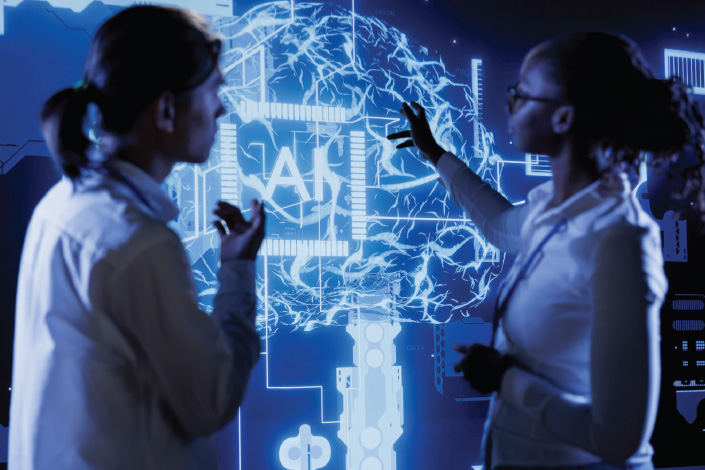Bracing for an Unpredictable Revolution
Ron Galloway

A black swan event refers to an unpredictable, extremely rare happening that has severe consequences. Scholar Nassim Nicholas Taleb popularized the term to describe highly improbable occurrences that deviate sharply from the norm and carry an extreme impact. Unlike predictable white swan events that follow typical patterns, black swan events seem to come out of nowhere and catch us off guard, just like artificial intelligence (AI) has done this year, which has been one of the most remarkable years in the history of technology.
The advent of AI is surely a black swan event in health care, particularly in a demographically rural state such as West Virginia. Here are 10 ways AI and machine learning (ML) may help in delivering health care.
- Telehealth expanded by algorithms can diagnose and treat minor illnesses without in-person doctor visits. This increases access to care in remote areas.
- ML models trained on patient data can identify those at risk for conditions like heart disease or diabetes. Early detection facilitates preventative care.
- Hospital operations optimized by AI can track equipment, schedule staff and manage workflows. Efficiency improvements lower costs.
- Computer vision guides surgeons during complex operations with enhanced precision and minimal invasiveness. Patient outcomes and recovery improve.
- ML personalizes treatment plans based on genotype, biomarkers and lifestyle data for each individual. Care is tailored for optimum results.
- Advanced prosthetics utilizing biofeedback and brain-computer interfaces might restore mobility and function. This improves quality of life after injuries.
- AI triage chatbots screen symptoms and refer patients to the appropriate level of care. This eases overload on doctors and ERs.
- Logistics algorithms optimize ambulance routing and hospital bed assignments during crises. Capacity is managed for the greatest community benefit.
- ML tracks chronic diseases, providing care reminders and flagging any changes requiring intervention. Conditions stay controlled.
- Virtual reality therapy aided by biometric feedback helps patients overcome pain, anxiety, addiction and PTSD. Mental health is addressed.
But what about a practical, real-world way it could help right now?
A recent article published in The Lancet titled, “Artificial intelligence for breast cancer detection in screening mammography in Sweden: A prospective, population-based, paired-reader, non-inferiority study,” provided a startling look at how AI can help radiologists. The study looked at different combinations of AI plus radiologists and their accuracy in detecting breast cancer in mammograms.
A double reading by one radiologist plus AI detected more cancers than double reading by two radiologists. The radiologist-AI strategy was deemed statistically superior. Think about that for a second. One radiologist plus AI is better than two radiologists.
A single reading by just AI was comparable to double reading by radiologists, but a triple reading by two radiologists plus AI found the most cancers overall.
The results suggest AI can boost cancer detection when combined with radiologists more than radiologists alone can. AI-assisted interpretation caught the most cancers, demonstrating a new standard for life-saving mammogram analysis.
This study demonstrates AI’s immense potential to enhance disease diagnosis when combined with human expertise. The findings suggest AI systems can catch life-threatening conditions that overburdened doctors might miss. Implementing AI as a supplemental diagnostic aid could boost the accuracy of radiology, pathology, dermatology and other image-based specialties. The efficiency gains could expand access to expert-level health care in underserved regions lacking specialists.
However, care must be taken to avoid over-relying on AI, as human judgment remains essential in health care. Overall, this research foreshadows an emerging paradigm where AI and human clinicians collaborate to provide the highest standard of care to save lives.



